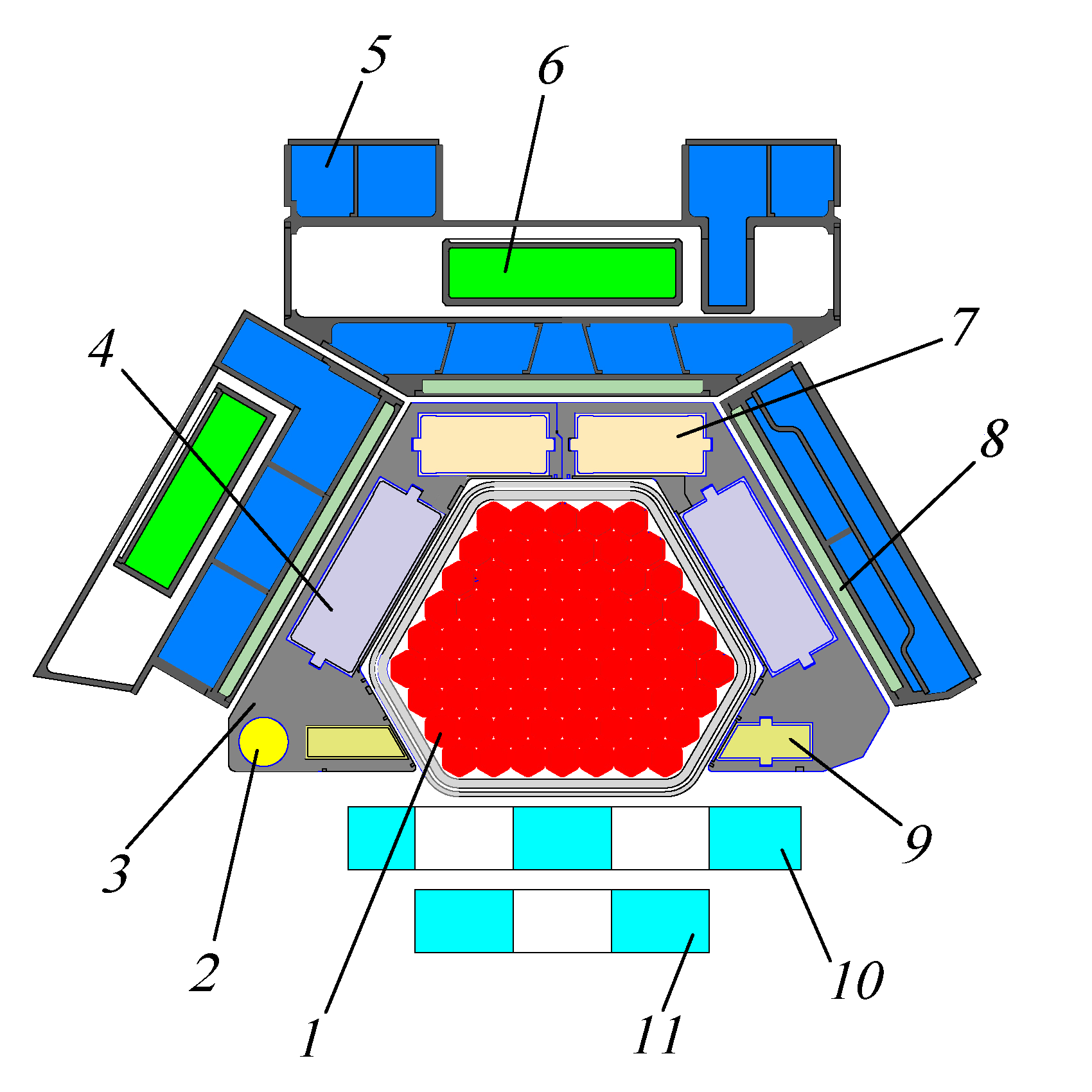IBR-2 is a pulsed fast reactor of periodic operation. Its main difference from other reactors consists in mechanical reactivity modulation by a movable reflector. The movable reflector is a complex mechanical system providing reliable operation of two parts, which determine the reactivity modulation: the main movable reflector and the auxiliary movable reflector. The rotors of the main and auxiliary movable reflectors rotate in opposite directions with different velocities. When both reflectors coincide near the reactor core, a power pulse is generated.
Table 1. Parameters of IBR-2
| Average power, MW | 2 |
| Fuel | PuO2 |
| Number of fuel assemblies | 69 |
| Maximum burnup, % | 9 |
| Pulse repetition rate, Hz | 5; 10 |
| Pulse half-width, µs: fast neutrons thermal neutrons |
200* 340 |
| Rotation rate, rev/min: main reflector auxiliary reflector |
600 300 |
| MMR and АМR material | nickel + steel |
| MR service life, hours | 55000 |
| Background, % | 7.5 |
| Thermal neutron flux density from moderator surface: - time average - burst maximum |
~ 1013 n/cm2·s ~ 1016 n/cm2·s |
* at reactor power 2MW [1]
Core
IBR-2M Reactor:
1 - reactor core;
2 - automatic regulator;
3 - matrix of a stationary reflector;
4 - compensating units;
5 - water cavities of moderators;
6 - cryogenic chambers of moderators;
7 - emergency protection system units;
8 - Boron carbide filling;
9 - manual regulator;
10 - primary movable reflector;
11 - secondary movable reflector.
IBR-2M Reactor:
1 - reactor core;
2 - automatic regulator;
3 - matrix of a stationary reflector;
4 - compensating units;
5 - water cavities of moderators;
6 - cryogenic chambers of moderators;
7 - emergency protection system units;
8 - Boron carbide filling;
9 - manual regulator;
10 - primary movable reflector;
11 - secondary movable reflector.
Fuel elements are composed of plutonium dioxide pellets and have a central hole, which allows an increase in the feasible burnup depth by a factor of 1.5.
